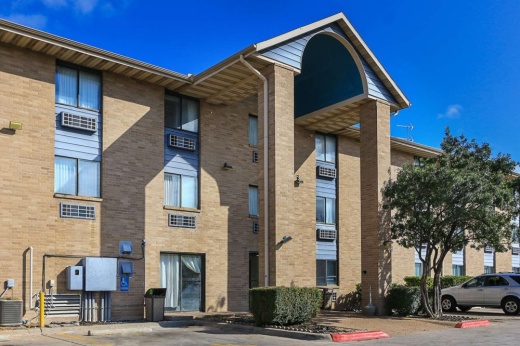The overview
Today, there are an estimated 880 homeless shelter beds across Austin in facilities owned by both the city and other organizations. A majority of those, about 466, are reserved for individuals, while the rest are dedicated to families with children.
But with an overall homeless population estimated at more than 5,400 people as of May, the demand for shelter beds is far outstripping supply. During a July 19 briefing to City Council, Homeless Strategy Officer Dianna Grey said there's only 1 shelter bed in Austin for every 5 people who need one.
“That, of course, is a major contributor to our significant unsheltered population,” she said.Another challenge for those on the streets is many facilities only offer beds through referrals; walk-in beds aren't common or typically open on any given night.
City staff said they are planning ahead to get more shelter space in place around the Austin area. It's a challenge that will require many additions to address as a new city analysis projects Austin faces a nearly 1,000-bed gap between need and availability by the end of 2025.
Hundreds more beds will soon be open, making that gap smaller, but it remains to be seen how many will remain in place beyond next year or what other new facilities could be added. The city's planned shelter additions include:
- Making space for an additional 130 people at the Northbridge and Southbridge shelters by double-occupying their units
- Bringing about 150 beds to The Salvation Army’s shuttered downtown shelter once it reopens under operator Urban Alchemy
- Opening a new temporary shelter at the east side Convention Center Marshaling Yard warehouse with space for 300 people
What's next
As those plans unfold, Garza said he believes the city must push for more planning and collaboration outside of City Hall to figure out a long-term plan to address the unsheltered population in the city after years without visible progress. He also said the shelter system should focus more on tracking successful outcomes after about 12% of people who exited shelter in fiscal year 2021-22 returned to homelessness and nearly one-third left to an unknown destination.
“When you look at what we’ve done over the last four years, we spent a considerable sum of money, ... at least, unofficially, over $200 million, trying to deal with the issues of various people who are experiencing homelessness,” he said. "At the end of that period, we haven’t decreased the amount of people experiencing homelessness. In fact, it’s increased. And so what we’ve got to do over the course of this next fiscal year ... is to take a step back and think about the governance process.”
Garza said that review could include more collaboration with Travis County and Central Health, the county hospital district, as well as other local partners. During the July council briefing, officials also said they hope to see more contributions from nongovernment sources to address communitywide needs.
“I’ve been disappointed that the philanthropic and private sector haven’t stepped up in the way that we had anticipated,” Council Member Leslie Pool said.
Garza's proposed budget for the upcoming fiscal year would add about $6 million more for general homelessness spending compared to the current year. But for projects such as the $9.14 million launch of the new Marshaling Yard shelter for a single year of operation—funded by limited federal relief dollars—officials will have to decide how to handle any potential continuation of that work in the future.
“I think that’s the question that we have not yet come to terms with. We used an enormous amount of the [American Rescue Plan Act] money for this effort,” Garza said. “If you were to transfer all those dollars and say now that becomes a general fund responsibility, we would have a financial exercise to do about what we have to jettison so that we can afford to do this.”
Overall, Garza said that and other questions about how Austin funds shelter, supportive housing and other homeless services still need to be resolved as the city faces a “fiscal crisis” on homelessness.





